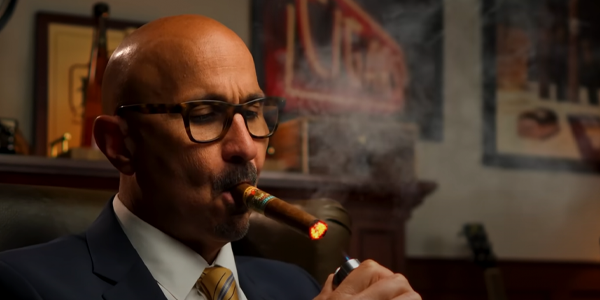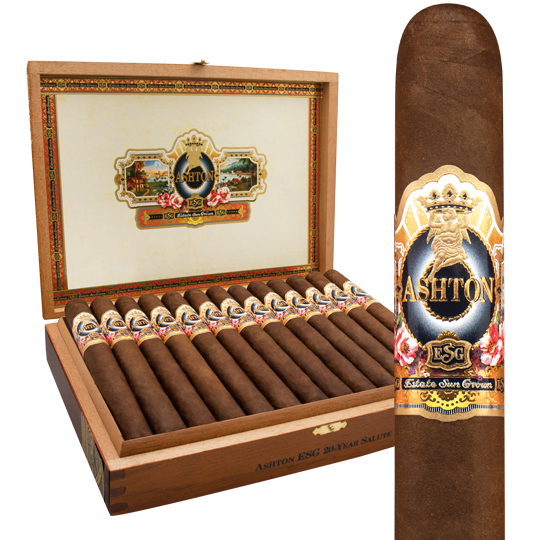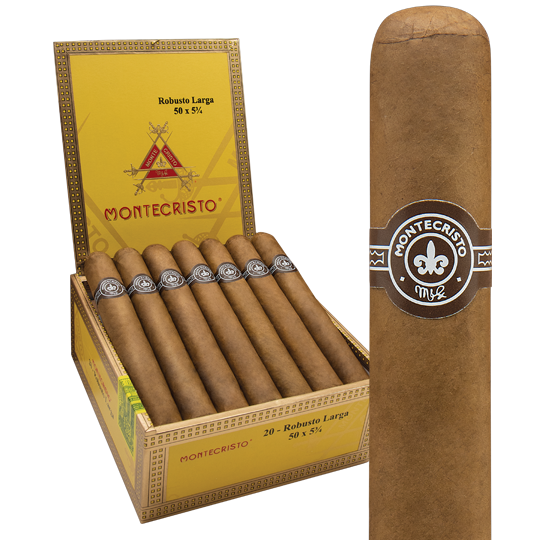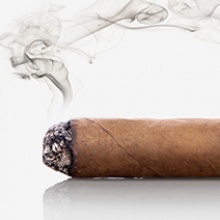How to Taste the Most Flavor in a Cigar
Cigar lovers sometimes debate the relevance of tasting notes in a cigar. We describe premium cigars using a lot of culinary terminology, similar to that used for fine wine and whiskey. Common cigar tasting notes include cedar, coffee, earth, leather, and spice. For many cigar lovers, these descriptions make perfect sense; others consider tasting notes to be a work of fiction, insisting their cigars taste like tobacco and smoke, and that’s it. Regardless of your views, we’ve got some simple tips for getting the most flavor out of a cigar. Two of the same cigars can taste different, for example, depending on the chemistry in your mouth or how fast you smoke. Follow our tidbits of wisdom to perceive the best taste a cigar has to offer.
Cleanse Your Palate
Previously, we put together a list of the best ways for cigar smokers to cleanse their palates. They include obvious remedies like water and club soda. Drinking coffee or tea also works wonders. The best snacks for cleansing your palate are lemon sorbet, dark chocolate, nuts, and unsalted crackers. Many cigar lovers enjoy savoring nuts or chocolate while they smoke. It’s more difficult to taste the nuances premium cigars offer if your palate is dehydrated or you just consumed a sodium-heavy meal.
Taste the Cigar Before You Light It
After cutting your cigar, take a few puffs before lighting it to taste its cold draw. Passing air through an unlit cigar and spinning it around in your mouth a couple of times gives an excellent preview of its flavor. Sweet and spicy nuances come through, highlighting subtle differences directly from the wrapper leaf. Connecticut Broadleaf wrappers are dark and sweet. Ecuador Sumatra wrappers are leathery and woody. Cuban-seed wrappers are leathery and spicy. Connecticut Shade wrappers are nutty and creamy.
Retrohale the Smoke
Our olfactory sense has as much to do with our sense of taste as our taste buds. That’s why it’s wise to retrohale cigar smoke, or blow it out through your nose. The goal is not to inhale, but rather to push the smoke up from your palate into your nasal cavity and expel it out through your nose. A cigar’s natural aroma and spice will leave a strong impression in your nose when you retrohale the smoke.
Choose a Pairing
Pairing your favorite cigars with your favorite spirits is one of the best ways to maximize your enjoyment of both. The possibilities are limitless when it comes to pairing cigars with bourbon, Scotch, rum, cognac, and cocktails. The key here is to keep in mind that some drink-and-cigar pairings complement one another, while others create contrast.
The vintage flavor of an Ashton ESG fits like a glove with a sip of Balvenie 14-Year Caribbean Single Malt. They naturally complement one another. However, the dark and spicy taste of a La Aroma de Cuba Mi Amor provides a contrast to the crisp, citrusy effervescence of a mojito, for example. Still, they taste great together. In both cases, the cigar and drink bring out specific nuances that you can only taste when you enjoy them together. Avoid pairings that overpower one another. An ultra-mild Connecticut Shade cigar, such as a Montecristo, won’t stand up well to a heavily peated Scotch, like Laphroaig. Shoot for pairings that are balanced.
Smoke Slowly
One of the easiest ways to ruin an otherwise perfect cigar is to smoke it too fast. When you really enjoy the taste of a cigar, sometimes it’s easy to devour it quickly. It’s good to exercise restraint, though. Puff on your cigar every 45 seconds to a minute or a minute and a half. When you smoke a cigar at a measured pace, you naturally perceive its taste in more detail because you give every puff more time to resonate on your palate.
And allow the ash to form at the foot of the cigar for an inch or two, which insulates it and prevents it from burning too hot. Inevitably, how long it takes to smoke a cigar depends on its size. A Corona lasts for 30-40 minutes. A Robusto lasts for around 45-50 minutes. A Churchill can burn for over an hour. Choose a size you have time to smoke. Don’t cram a big cigar in under 30 minutes. You’ll miss out on its tasting notes, and you risk getting nauseous.
Tasting Notes to Be Aware Of
Cigar tasting notes rely on culinary terms to describe a cigar’s flavor profile, similar to how a sommelier discusses wine. Taste is personal, though, so don’t feel bad if the tasting notes in a cigar description seem foreign or tough to grasp. They provide a roadmap for cigar lovers to decide what new cigars to buy, but they’re open to interpretation.
The most common tasting notes in a premium cigar include nutty notes, like cashew and almond; sweet notes, like cocoa and molasses; wood and vegetal notes, like cedar, hickory, and grass; natural notes, like earth and leather; spicy notes, like black pepper, cayenne, and cinnamon; and coffee notes, like espresso and cappuccino.










